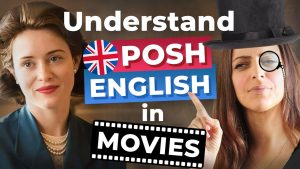Story Structure: The Secret Sauce to Improve Your English—Using Film Scripts for Grammar and Writing Mastery
Although it’s a traditional path, learning English using textbooks becomes quickly outdated. Now let the beauty of scripts and narrative structure come through. Movies enthrall us not just with the words but also with the way their tales develop. What then could you do if you could use the blueprints of these stories to practice writing, vocabulary, and grammar? That’s where “best english movies for learn english” shot to front of the class. But this approach goes beyond merely copying quotes or gazing at well-known passages. Let’s figure out how you might absorb the craft of narrative and ride on movie scripts to boost your language abilities.

The Foundation: How Structure of Stories Improves Language Learning
Every great film runs on a skeleton known as narrative structure. It moves beginning, middle, end using three consistent legs—traditional yet quite powerful. The opening shapes the circumstances and the people. The middle tosses curveballs—conflicts, shocks, mounting suspense. The payout, the resolution, marks the end. Imagine “The King’s Speech,” in which a royal under challenge discovers his voice, or “Forrest Gump,” zigzag throughout history but always looping back home.
Why should this be relevant to those learning languages? Because stories stick. Analyzing, retelling, or repurposing story points naturally uses English for real communication—not abstract drills. Ask a student to creatively reinterpret the climax of a movie, for instance. Unconsciously filing away grammar rules, they will fight imaginatively with verbs, sentences, and tense changes.
The Authority of Pattern and Predictability
Grammar enters narrative like a cunning cat. Every scene forces grammar—questions, assertions, imperatives, conditionals, wishes—into action. Learners observe how grammar shapes the narrative by mapping where these components show up—think of a heated argument in “The Social Network” or a nice apology in “Notting Hill.”
A good story framework is like scaffolding. It preserves scenes from toppling over, paragraphs, and sentences from collapsing. Using real film dialogue, students safely explore with language—in much the same way a musician riffs inside a familiar scale—by following or adapting this structure.
Examining Movie Scripts is Like a Gold Mine for Grammar and Writing Exercises
Why Textbooks Cannot Replace Film Scripts
Scripts for movies catch real speech. Characters stammer, interrupt, pause, or rave. Dialogues hum with phrasal verbs, idioms, pop culture allusions, or incomplete ideas. It’s night and day when you compare it to the harsh penalties in most textbooks.
Exercises based on scripts tackle numerous areas:
Contextual grammar: Students either fill in or rewrite actual exchanges—“I only said it to her because I believed she’d gone to Paris!”—instead of creating grammatical drills (“She ___(go) to Paris yesterday.”)
In terms of rhythm and pronunciation: Reading scripts aloud exposes missing vernacular stress, intonation, and connecting that results from written drills.
Creative writing: Use movie clichés to push students to stretch sequences, change ends, or create imagined deleted scenes.

Methods for Applying Scripts in Self-Study or Class
List and break apart important scenes.
Choose a scene from a movie such as “Dead Poets Society” that really sticks out. Create the discussion by printing it. Between characters, students name and color-code verb tenses, adjectives, queries, or opposing language styles. This graphic style performs better than drills or dry lists.
Paragraph and Rewrite
Give students the chore of paraphrasing a speech by a character. “Seize the day, lads. Make your life exceptional.” You might say it in how many different ways? “Seize your opportunities.” Live large. Their active vocabulary is stretched here.
Write Your Own Talk
Starting with a scene might help. Stop following a conflict—that is, when Bridget Jones finds herself in a humiliating situation, say. Emphasizing target structures (“If I had known…” or modal verbs: “You should have told me…”), have students write what happens next.
Complete the Blanks
Share a script passage including missing words or phrases. Have students guess from the context the missing grammar or vocabulary. Grounded in narrative, not abstraction, this basic but effective gap-fill exercise.
Play Out for Both Speaking and Writing
Have pupils pretend out scenes. Later on, they create a journal entry from the point of view of their character, therefore strengthening grammar in context.
Fact: Stories Stickiness
Scientific support for this is strong. According to a 2010 Stanford research, “Narrative is the natural default mode of human thought,” information provided as a tale rather than as factoids or lists threads itself deeper into memory. Students exposed to stories thus remember language patterns longer. Dialogues from “The Shawshank Redemption” or “The Pursuit of Happyness” do not fade; they replay in the mental cinema of the brain.
The Best English Movies for Script-Based Language Learning
Which films are best used as grammar labs? Those with natural (yet understandable) conversation, engaging characters, and clear storytelling will have the best response. Here is a combination of comedy, drama, and dialect diversity:
“The Devil Wears Prada”: Punchy office humor, American and British English. Lots of arguments, apologies, and persuasion.
“Forrest Gump”: Simple story, strong idioms. Perfect for honing descriptive writing and the passive voice.
“Clueless”: Teenage language strong in slang, sarcasm, and idioms.
“Finding Nemo”: Brief, repeated sentences. Ideal for novice and intermediate levels.
“The Philosopher’s Stone, Harry Potter”: British pronunciation, official and casual language, magical vocabulary.
“Notting Hill”: Polite refusals, apologies, and social mistakes abound in charming romantic comedy.
“Love Actually”: Multiple narratives, varied accents, highlight spoken English in a variety of social settings.
Choose a movie with subtitles since they are necessary to note strange words and capture slurred speech.

Passive observation won’t cut it; you need to interact. Interactivity drives education:
Stop and Forecast
Stop at pivotal points of the narrative. Ask, “What do you think she will say next?” One of the best ways to learn modal verbs (“She might ask him to leave”).
Reverse the Function
Alternately line the hero and sidekick. Still do the grammar make sense? What distinguishes?
Synopsis of Scenes
Following your viewing, write the narrative in your own words using target tenses (“Yesterday, she realized he had forgotten her birthday…”).
Correct for Tone
Turn a passionate outburst into a peaceful negotiation or vice versa. Change grammar, phrase pattern, and vocabulary.
